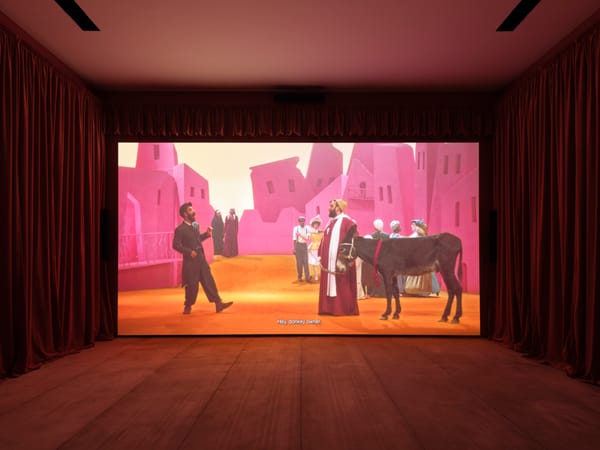Ideas
Powered by Collectivity: Diasporas Now
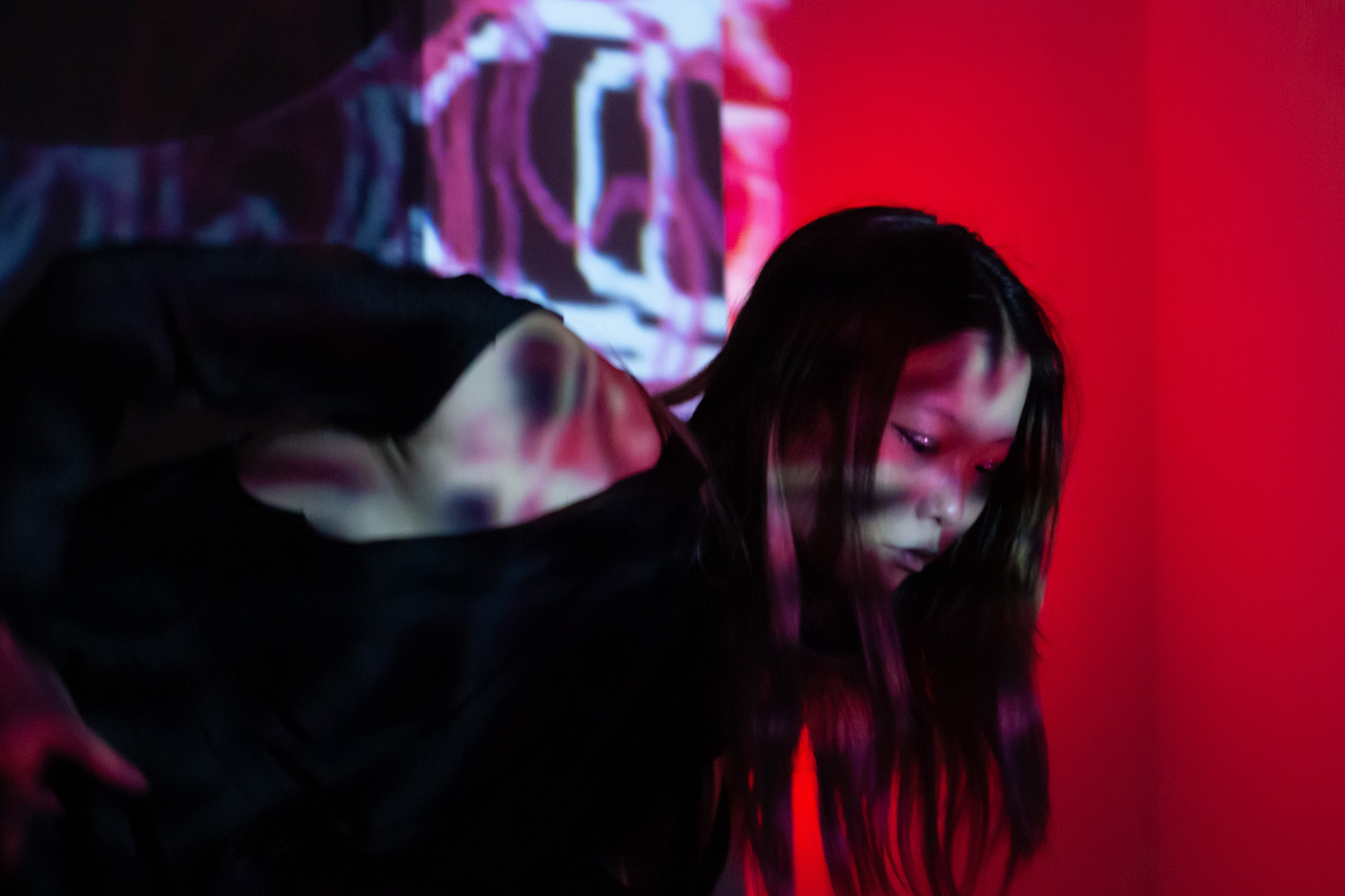

One evening in March, 40 people sat shoulder-to-shoulder on the second floor of Cambridge’s Gallerie V, anticipating the start of “The Enigma of Arrival,” a showcase curated by Winnie Zhu and Wen Xiao that featured live art by dance-theater company Wringing Metamorphosis and the performance-art platform Diasporas Now. It was difficult to see where the performance space ended and the audience began, but as Lulu Wang stepped out into the audience in Diasporas Now’s first performance of the night, it became clear that those boundaries were not meant to exist. Though the four performances presented by Diasporas Now were very different, they were all connected by a feeling of free travel, a sense of transgression that is emblematic of diaspora art.
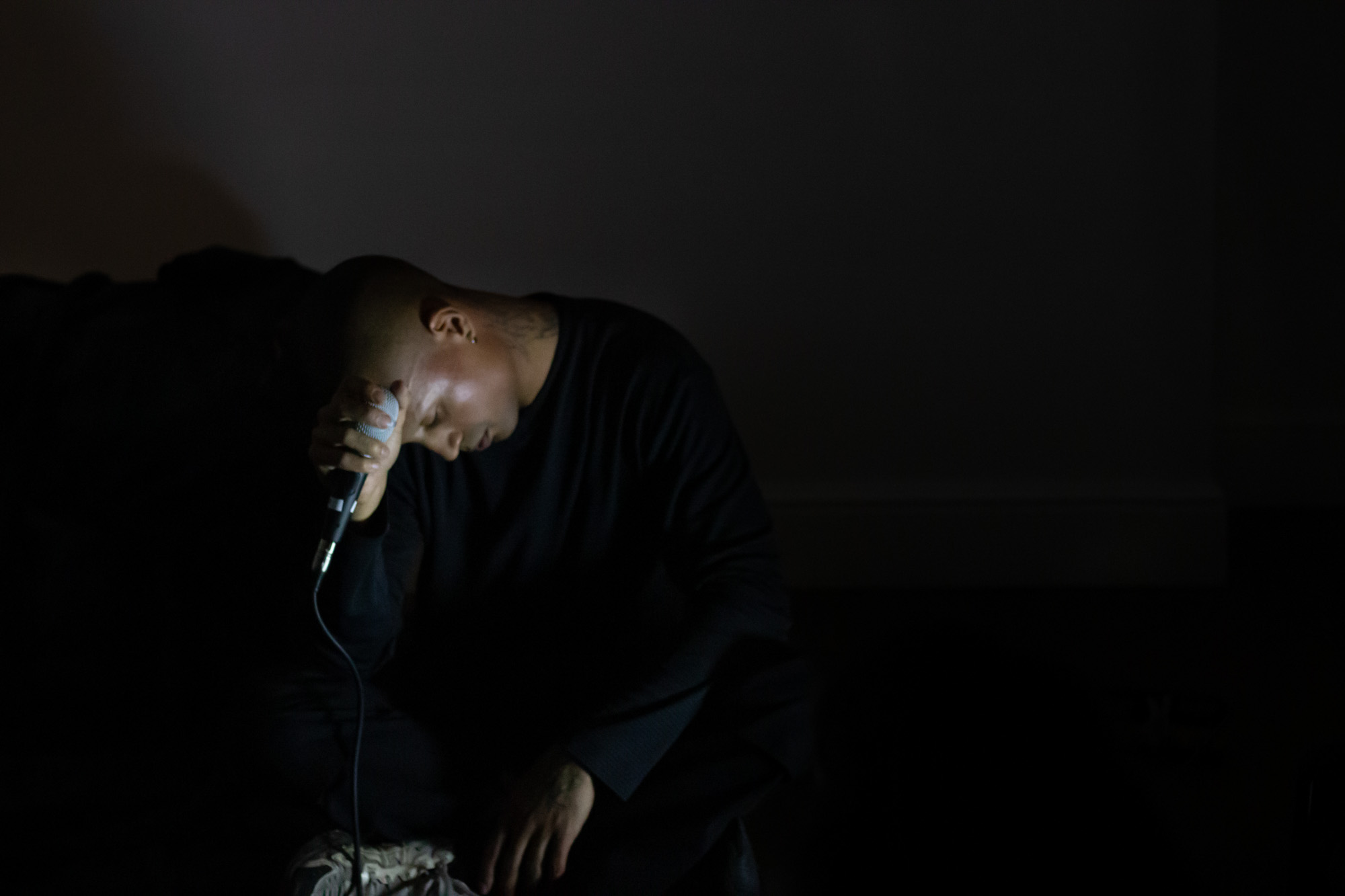
“Diaspora” is often thought of in relation to borders. It entails a displacement from home to a foreign space, and a sacrifice of belonging as that threshold is crossed. Perhaps it’s appropriate then, that Diasporas Now has chosen performance art, a medium intimately concerned with the way a body moves through space, to destabilize the categorical power of borders to tell us where and how to be. In her performance DNA – Beyond the Body (2022), Wang “cloned” herself with a fabled piece of alien technology known as the Pisces Jade, creating a cyborg version of her backed by myth and magic. In What do you see (when I feel what I feel)? (2022), Josh Woolford made time loops, recording their voice and replaying the track until six past versions of them sang into the present performance space. Paola Estrella subverted the patronizing dehumanization of marginalized bodies as animals in Embodying a Hummingbird (2022), while Rieko Whitfield drew on supernatural avatars to manifest alternate futures in an excerpt of Regenesis: An Opera Tentacular (2021). In no performance was it possible to make clean cuts, or tell where the body ended and where the animal, spiritual, or technological began. They were hybrids, and moved instinctively against these boundaries.

Diasporas Now was founded in 2021 by Whitfield, Estrella, and Wang while they were students at London’s Royal College of Art (RCA). The three aimed to establish a platform that helps diasporic performance artists of color gain exposure. By operating as a collective, they are able to liaise directly with institutions interested in presenting diaspora art, placing emerging artists in spaces that they might not otherwise have access to as individuals. “Performance art is still regarded as a fringe medium,” says Whitfield, now the director of the platform. “It can’t be hung, or displayed and bought in the same way most traditional mediums can.” Faced with a scarcity of opportunities, Whitfield added, performance artists of color who work in diasporic or Global South contexts often feel pressured to “cater to White institutional gatekeepers, or submit to the very real pressure of White-washing and the tokenizing of our practices.”
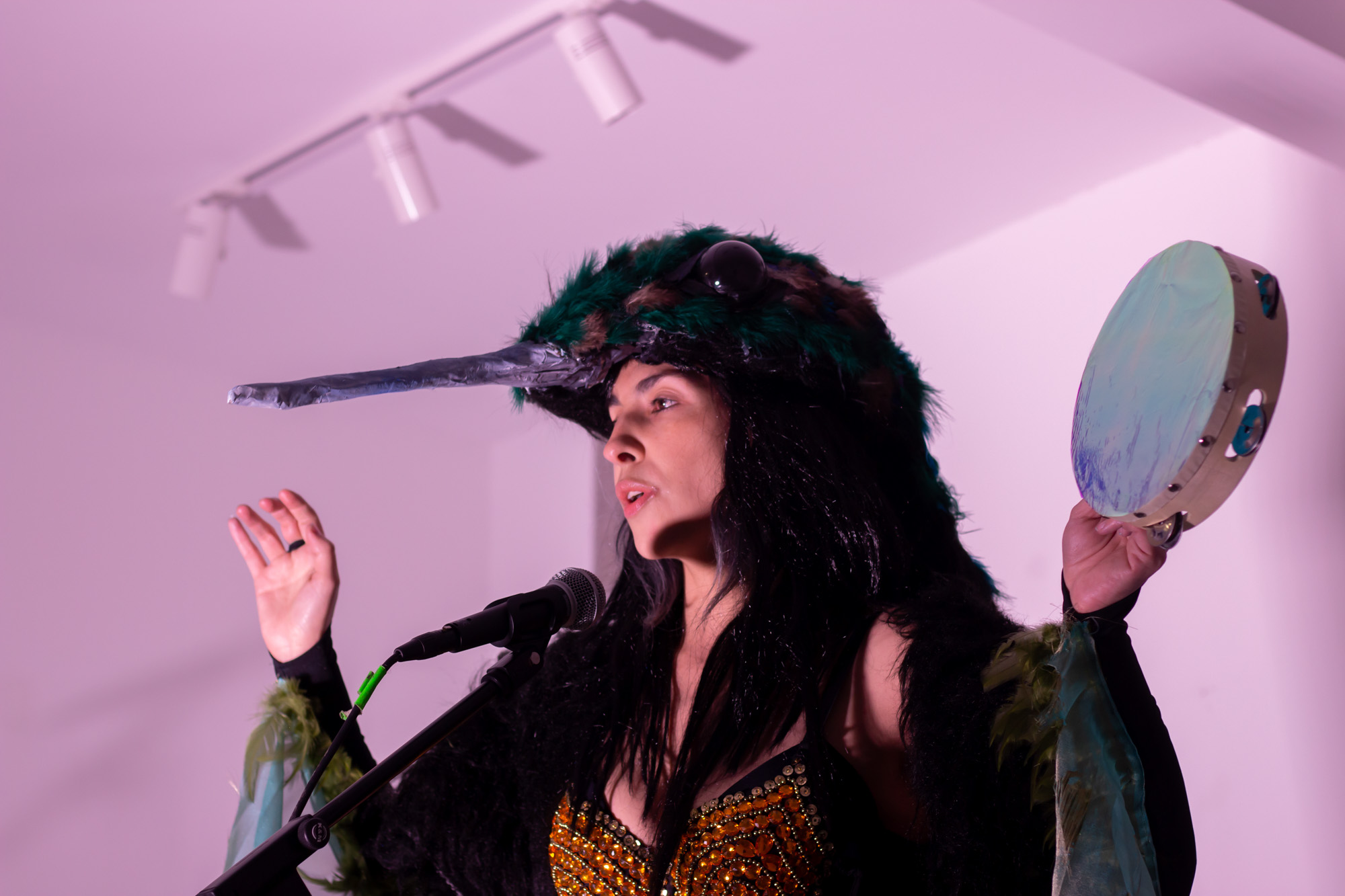
The power dynamics that diasporic artists have to navigate became clear to the founders during their time at the RCA. According to the school's own chart published in June 2020, 71 percent of the academic staff are White, suggesting that Whiteness remains the arbiter of artistic quality at a university situated within a White artistic canon. In 2020, the college came under fire for appointing a White man to helm its “Department of Inclusion”; after protests by more than 800 present and past staff and tutors, this decision was overturned.
Whitfield, Wang, and Estrella themselves became involved in a budgeting dispute over their final-year project at the RCA. For Diasporas Now’s first showcase, the artists collaborated with 11 diasporic artists of color to show a series of moving-image works that challenge the state of “belonging.” However, they encountered a series of administrative obstacles that revealed how structurally embedded White privilege is in the art world. Not only were they pressured to change their project to include “all performance artists,” they were the only group in the degree show that was subjected to a departmental vote to access funds or asked to run another open call after curation was finalized.
As Whitfield explains, “It became clear that even though people are okay throwing in a few token POC artists into the spotlight, they are still uncomfortable when change on an infrastructural level is brought up. People are threatened by anything that actively challenges the status quo.” Speaking to how such conditions informed the aims of Diasporas Now, Estrella added: “The moment we launched the platform, it felt good and necessary. The power structures that lead the art world have certain expectations on how identity should be approached. They expect struggle and a performance of pain for the Western gaze rather than an experiment or a celebration of complex notions of identity.”
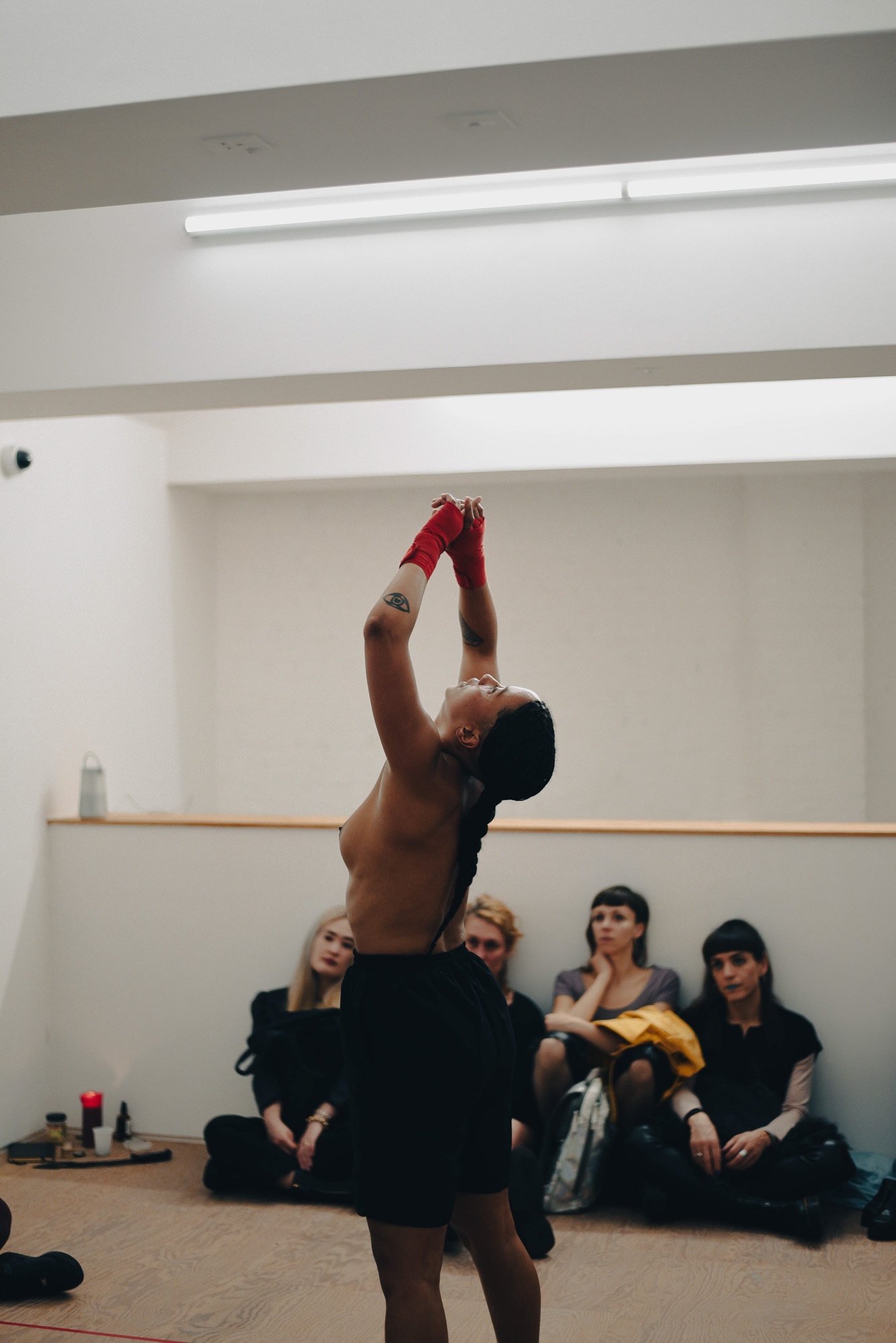
The success of Diasporas Now’s debut event led to invitations for the group to develop exhibitions at the UK Mexican Arts Society, Harlesden High Street, and the nonprofit Mimosa House, all spaces led by people of color. Likewise evidencing how systematic change can only happen when lines of solidarity run across artists, spaces, and funding bodies, the platform’s performances in “The Enigma of Arrival” could not have as effectively disrupted White-dominated structures of art history and consumption without the funding and organizational efforts of Gallerie V and the student-activist group Decolonize Art History. Whitfield, Wang, and Estrella also describe individual staff members who operated against the RCA’s red tape to mentor them, not only providing mental and emotional support but connecting them with professional opportunities. “There is a quote I love from the writer adrienne maree brown,” Whitfield shared. “[She] says ‘organizing is to the community as spiritual practice is to the individual.’ I think now more than ever we need artists to organize and reimagine social and political infrastructures from the bottom up if we want to write new narratives that reflect the values we wish to embody.”
Yet, systemic change does not happen overnight. As much as you can engage in discourse, structural oppression is deeply embedded, and will require time and effort to undo from our cultural fabric. Mitigation, therefore, is the only short-term solution, which often looks like ensuring artists get fair financial compensation and receive commissions that allow them to deliver powerful and even healing art experiences for under-represented communities. “Long-term financial sustainability is a very high priority for me as the director of the platform,” says Whitfield. “We are currently pursuing a mix of private and public investments in Diasporas Now, but I think our open-minded approach to performance art allows for interesting cross-industry collaborations.”
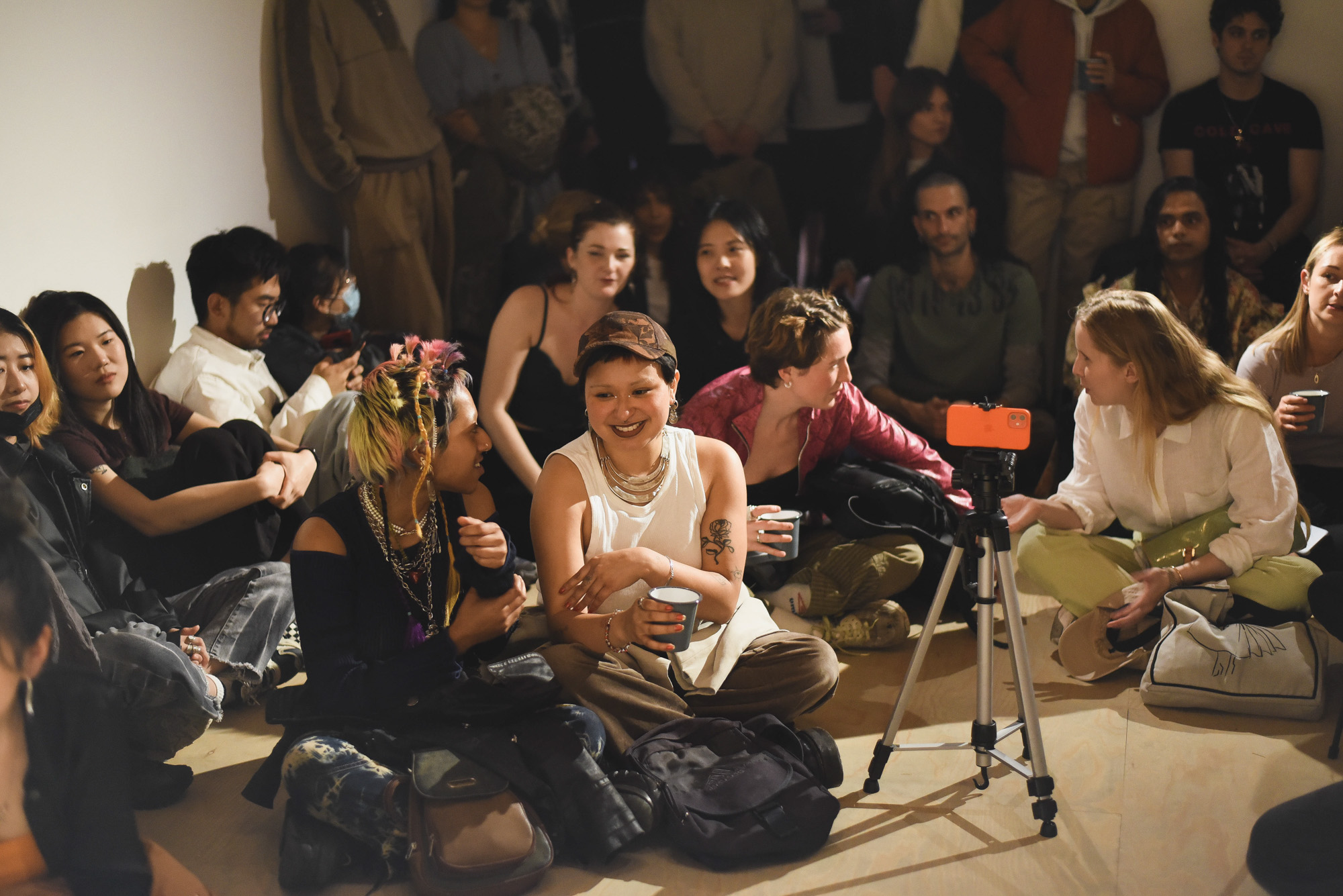
The balance between financial sustainability and access remains a tenuous one. Though it is usually private galleries and museums that can afford to commission performances, the diasporic communities of color that Diasporas Now is geared for often don’t feel comfortable in or have access to these spaces. Part of the platform’s goal in raising funds is to subsidize performances at more accessible venues. For instance, “All the Guilty Things” (2021), for fetchish.net, was a block party with music and performances, and members of the group were recently invited to perform at GGI 끼, a trans-led club night for London’s queer, trans, and nonbinary East and Southeast Asian community. “It’s an exercise in cultural entrepreneurship,” says Whitfield. “When we live visibly othered existences in environments that value Whiteness, straightness, and maleness, I think community is crucial in creating our own spaces where we belong.”
